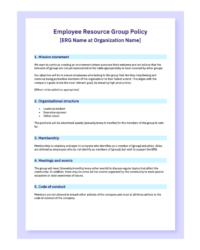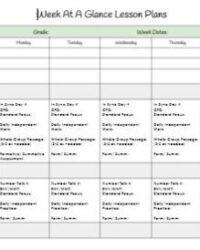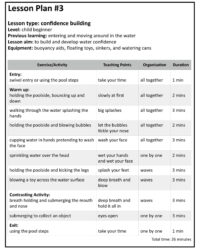Teaching math can sometimes feel like a juggling act, trying to meet the diverse needs of every student in your classroom. Some students grasp concepts quickly, while others might need a little more time and personalized attention. This is where guided math steps in, offering a flexible and effective approach to differentiate instruction and truly reach every learner right where they are. It’s all about creating smaller, focused groups where you can provide targeted instruction, immediate feedback, and tailor activities to specific learning styles and needs.
But how do you keep track of all those groups, objectives, and activities? That’s where a well-structured framework becomes your best friend. Imagine having a clear roadmap for each lesson, ensuring every minute with your students is purposeful and productive. A solid guided math lesson plan template isn’t just a piece of paper; it’s a powerful tool that transforms your planning process, streamlines your teaching, and ultimately enhances student learning outcomes. It helps you organize your thoughts, anticipate needs, and ensure consistency across all your small groups.
Understanding the Core Components of a Guided Math Lesson
At its heart, a guided math lesson is designed to be highly responsive. It moves away from the one-size-fits-all lecture model and instead embraces the idea that students learn best when they are actively engaged and when instruction is tailored to their specific Zone of Proximal Development. This means identifying what each student already knows and what they are ready to learn next, then providing the scaffolded support to bridge that gap. A well-designed lesson flows seamlessly, even if the content varies from group to group.
To truly make guided math effective, a structured approach is essential. This structure doesn’t stifle creativity; rather, it provides a robust framework within which innovation can thrive. Without a clear plan, it’s easy for lessons to become disjointed, leading to wasted instructional time and missed learning opportunities. A strong template encourages you to think through each stage of the lesson, from setting objectives to assessing understanding, ensuring a comprehensive and cohesive learning experience for your students.
Setting Clear Learning Objectives
Before you even think about activities, the very first step in any effective guided math lesson is to pinpoint exactly what you want your students to learn or be able to do by the end of the session. Clear, measurable learning objectives act as your North Star, guiding all subsequent planning. These objectives should be specific enough to be understood by both you and your students, measurable so you can determine success, achievable within the lesson’s timeframe, relevant to the curriculum, and time-bound. For instance, instead of “understand fractions,” a better objective might be “students will be able to identify and name unit fractions given visual representations.”
Designing Engaging Activities
Once your objectives are set, it’s time to brainstorm the activities that will help your small groups meet those goals. This is where the magic of differentiation truly shines. For one group, a hands-on activity with manipulatives might be perfect for building conceptual understanding. For another, a challenge problem or a technology-based simulation could deepen their analytical skills. The key is to select activities that are not only aligned with your objectives but also captivating enough to keep students actively involved. Think about problem-solving tasks, math games, interactive whiteboards, or even collaborative projects that foster discussion and peer learning.
Effective Assessment Strategies
Assessment in guided math isn’t just about tests; it’s a continuous process woven throughout the lesson. As you work with each small group, you’ll naturally be observing their understanding, listening to their explanations, and asking probing questions. These formative assessments provide immediate feedback, allowing you to adjust your instruction on the fly. Beyond observation, think about quick checks for understanding, short exit tickets, or even a simple thumbs-up/thumbs-down check. The goal is to quickly gauge comprehension and identify any misconceptions before moving on, ensuring that students are building a solid foundation.
Maximizing Your Guided Math Lesson Plan Template
Having a fantastic guided math lesson plan template in hand is just the beginning. The real power comes from how you use it. Think of your template not as a rigid rulebook, but as a flexible blueprint that you can adapt and refine with each teaching experience. It should be a living document that grows and evolves alongside your understanding of your students’ needs and your own teaching style. Don’t be afraid to customize it, add your own notes, or even create different versions for different types of lessons or groups.
One of the greatest benefits of consistently using a well-thought-out template is the efficiency it brings to your planning process. Instead of starting from scratch every time, you have a solid framework to build upon. This frees up valuable time and mental energy that you can then dedicate to more important tasks, like analyzing student data, preparing targeted materials, or simply connecting with your students on a deeper level. It also ensures that you don’t inadvertently overlook crucial steps in the planning process, leading to more organized and effective lessons.
Furthermore, a detailed guided math lesson plan template acts as an invaluable record of your instruction. It allows you to look back at what worked well, what might need tweaking, and how you addressed specific learning challenges for different groups. This reflective practice is crucial for continuous professional growth. By consistently documenting your lessons, you build a rich repository of ideas, strategies, and insights that will serve you well for years to come, making each subsequent lesson even stronger than the last.
Here are some practical tips for making the most of your template:
* Pre-assess students to inform group formation and lesson content.
* Group students flexibly, changing groups based on specific learning objectives.
* Prepare all materials and manipulatives in advance to avoid wasting valuable group time.
* Allocate specific timeframes for each part of your small group instruction.
* Differentiate not just content, but also process and product within your activities.
* Include space for post-lesson reflection notes to inform future planning.
Embracing a structured approach to guided math through a comprehensive template can truly revolutionize your math instruction. It transforms the challenging task of differentiation into a manageable and highly rewarding process, empowering you to meet every student where they are and propel them forward in their mathematical journey. This systematic method ensures that every minute of your instructional time is purposeful, leading to deeper understanding and greater confidence for your learners.
Ultimately, a well-utilized guided math lesson plan is more than just a planning tool; it’s a commitment to effective, student-centered learning. By investing the time to organize your thoughts and structure your lessons, you create an environment where all students feel supported, challenged, and successful. This leads to a more vibrant and productive math classroom, fostering a genuine love for numbers and problem-solving in every child.


